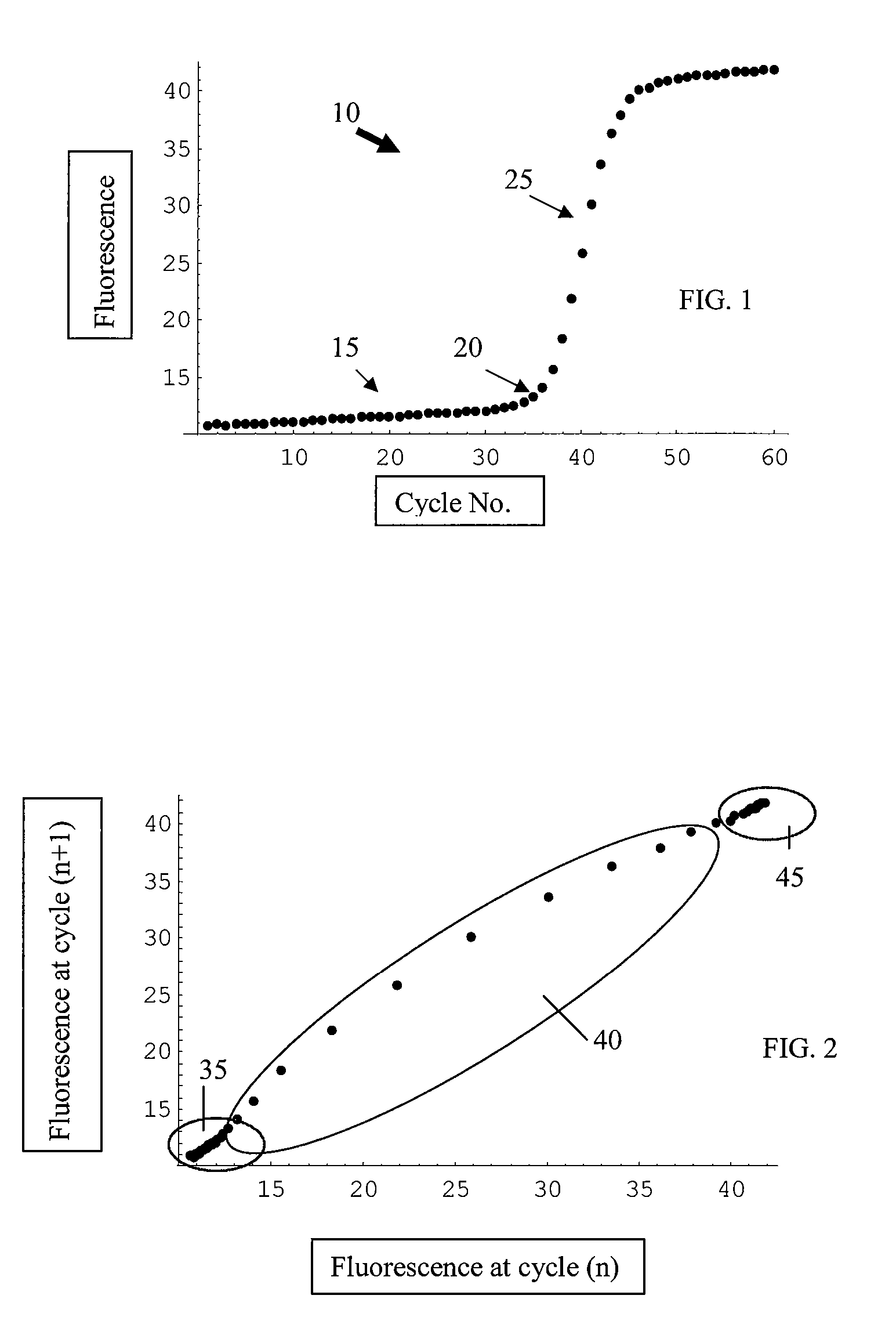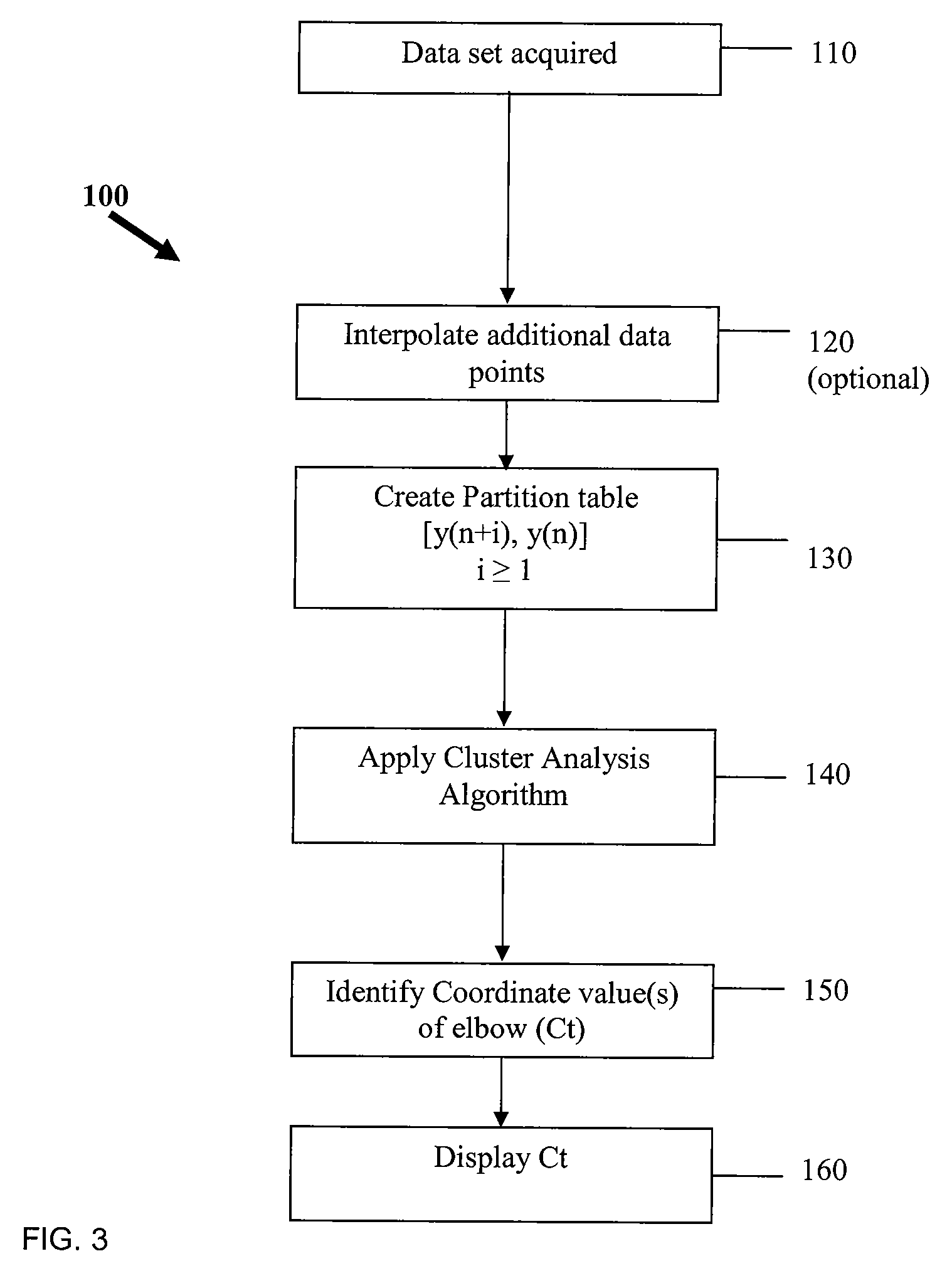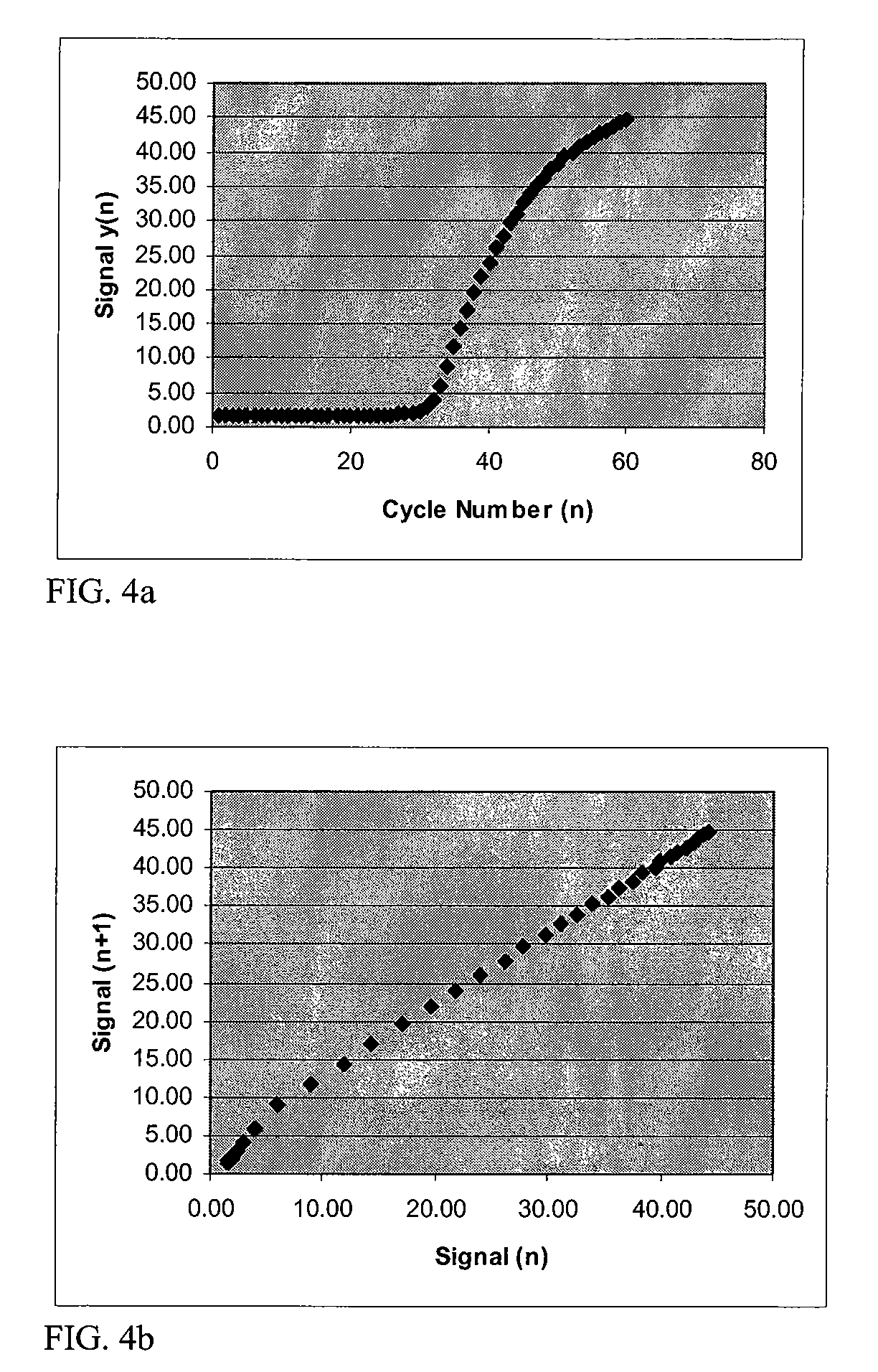Ct determination by cluster analysis with variable cluster endpoint
a cluster analysis and cluster endpoint technology, applied in the field of systems and methods for processing data representing sigmoid type curves or growth curves, can solve the problems of many parameters that are often difficult to optimize, all of these methods have drawbacks, and the normalization of data may also provide additional problems
- Summary
- Abstract
- Description
- Claims
- Application Information
AI Technical Summary
Benefits of technology
Problems solved by technology
Method used
Image
Examples
examples
[0060]The processes of the present invention are particularly useful in PCR systems, such as thermocyclers, to significantly improve the quality of the PCR results data. Examples of data processed according to the present invention are discussed below.
[0061]FIG. 8 shows an example of a plotted data set analyzed according to the present invention. This particular data set was difficult to analyze with existing algorithms. When processed through the Cluster Ct Analysis approach of the present invention, the Ct value was determined to be 13.1.
[0062]FIG. 9 shows another example of a plotted data set analyzed according to the present invention. This data set, when processed using the Cluster Ct Analysis approach of the present invention, gave the Ct value as 35.9. A traditional approach, which involved normalization, had difficulty with this data set.
[0063]FIG. 10 shows an example of plots of the resultant fluorescence signal from 10 identical samples processed through a thermal cycler a...
PUM
| Property | Measurement | Unit |
|---|---|---|
| cycle threshold | aaaaa | aaaaa |
| Ct | aaaaa | aaaaa |
| fluorescence intensity | aaaaa | aaaaa |
Abstract
Description
Claims
Application Information
 Login to View More
Login to View More - R&D
- Intellectual Property
- Life Sciences
- Materials
- Tech Scout
- Unparalleled Data Quality
- Higher Quality Content
- 60% Fewer Hallucinations
Browse by: Latest US Patents, China's latest patents, Technical Efficacy Thesaurus, Application Domain, Technology Topic, Popular Technical Reports.
© 2025 PatSnap. All rights reserved.Legal|Privacy policy|Modern Slavery Act Transparency Statement|Sitemap|About US| Contact US: help@patsnap.com



